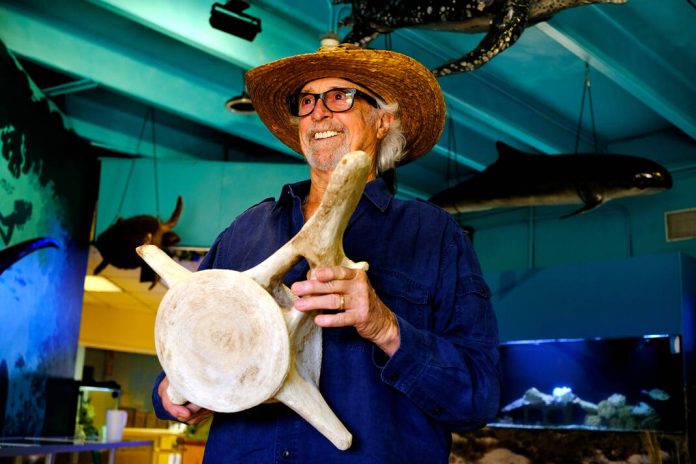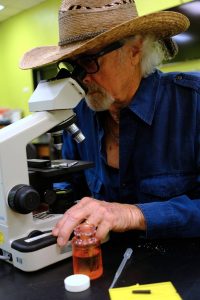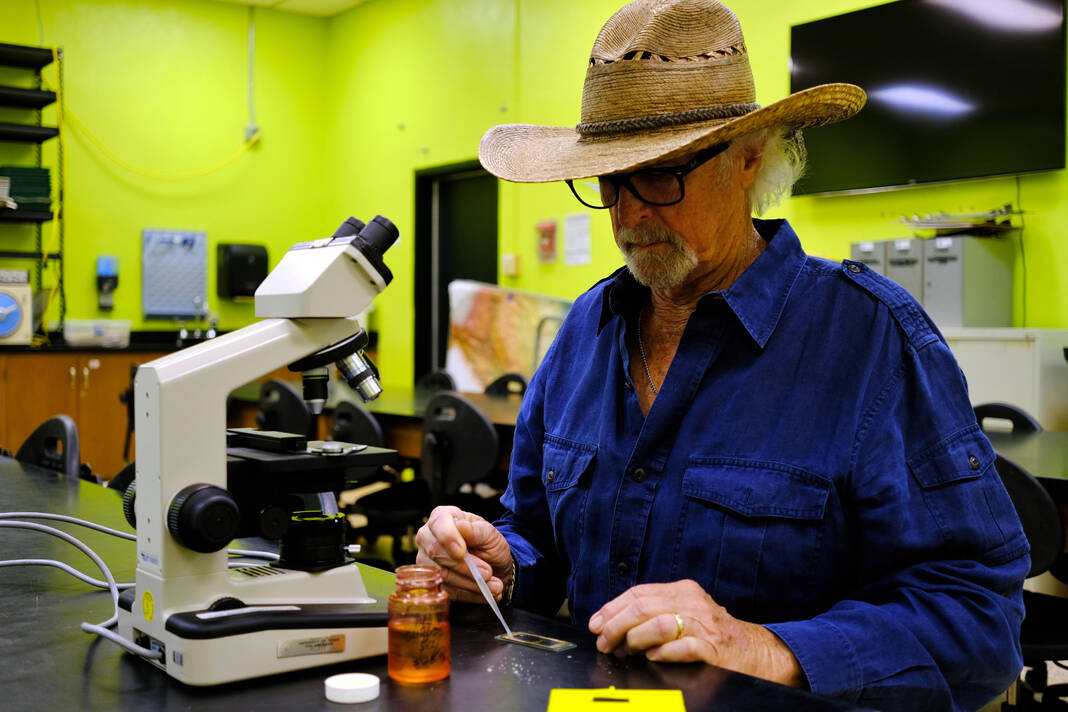
|
Only have a minute? Listen instead
Getting your Trinity Audio player ready...
|

After 50 years as a marine biologist, Tony Reisinger must have at least some saltwater running through his veins.
One thing’s for sure, according to Reisinger, who spent 42 years as a Cameron County extension agent for Coastal and Marine Resources with Texas Sea Grant and Texas A&M AgriLife Extension Service before retiring July 12: “Once marine biology gets in your blood, it’s hard to get away from it.”
County commissioners recently honored him with a resolution citing the decades of service and Reisinger’s crucial work with the Gulf shrimp industry in helping the industry adapt to new regulations involving turtle-exluder devices and reduction in by-catch — fish and other creatures unintentionally caught in shrimp nets.
Reisinger also co-founded the Texas Red Tide Rangers, partnering with the University of Texas-Pan American (now UTRGV) Coastal Studies Lab, to train first responders to measure red tide concentrations and the impact on South Texas, an accomplishment likewise cited in the county’s resolution, which Precinct 3 Commissioner David Garza read aloud during the commissioners court’s Aug. 6 meeting.
“In ’86 Texas had a huge red tide,” Reisinger said. “It killed 22 million fish and it worked its way all the way down the coast to here, and into Mexico,” he said.
It happened again around 1990, prompting him to launch the Rangers with Don Hockaday of the Coastal Studies Lab the same year.
“Parks and Wildlife was overwhelmed with dead fish,” Reisinger said. “They didn’t know where red tide was going, or where it wasn’t. We asked volunteers to take samples for us, and they took thousands of samples. All the sinks in the lab were full of plastic bags full of samples of red tide.
“It overwhelmed us, because we were using microscopes to count the cells in order to know the concentrations. If you have higher than 100 cells per milliliter, they carry a neurotoxin, and it can aerosolize in the air and you breathe it and it causes respiratory problems.”
Fortunately, the red tide blooms visiting south coastal Texas in recent years have been minor compared to those events from decades ago, he said.
Reisinger also founded Texas Coastal Naturalists, a group of volunteers who rescue cold stunned sea turtle, stranded marine mammals and pelicans downed during winter storms, and started two local Texas Master Naturalist chapters, the RGV Chapter and South Texas Border Chapter, training and advising more than 750 master naturalists who dedicate their time volunteering throughout the Valley.

Reisinger was born in Pensacola, Fla., but lived all over the United States — Alaska, Boston, Key West, New Orleans, Monterrey, Calif., to name a few places — depending on where his father, a Navy pilot/instructor, was stationed. Reisinger earned a bachelor’s of science in zoology from the University of Georgia in 1974 and was doing work for the university as a marine resources specialist (specifically, oysters) while living in Mineral Wells, Texas, when he landed the marine extension agent job in the Valley. That was in 1982.
As cited in the resolution honoring him, Reisinger has also worked closely with UTRGV faculty on environmental issues, provided outreach and extension services to Valley aquaculture operations, served on the UTRGV Institutional Biosafety Committee from 2013 to 2012, and served on the Texas International Fishing Tournament advisory board (and as weighmaster) for more than four decades.
He received the Distinguished Service Award from the Texas County Agricultural Agents Association in 1993, the Sea Grant Extension Assembly’s Superior Outreach Award for the Gulf region in 2010 and 2012, and in 2017 was named the Texas Master Naturalist State Advisor of the Year.
The resolution recognized Reisinger for “outstanding service, dedication and contributions” to the county, the Gulf and “wider environmental and marine communities.”
“His legacy will continue to inspire and benefit future generations,” Garza read during the commissioners meeting.
Though technically retired, Reisinger is not idle. He taught a class on red tide to Texas Parks and Wildlife Departmental coastal biologists earlier this month, in fact, and aims to do more of the same. Reisinger is also an artist, who specializes in fish printing (also taught at the Coastal Studies Lab) and has actually sold quite a few — fish prints that is.
Essentially, it involves coating the fish with ink, water-based paint or what have you, laying paper on top of it and then rubbing it until the fish is printed.
“There’s a lot more to it than that,” he said. “You get to fill in the eye. That’s the fun part. It just comes alive when you fill in the eye.”
When Reisinger isn’t fish printing or teaching an occasional class, he might be found walking on the beach with his dog, which he loves to do almost every day, along with beachcombing.
And there’s still a lot to know about the ocean and the creatures that inhabit it, Reisinger said, noting that there’s some truly weird stuff out there.
“There’s so many things to learn,” he said. “I think that’s one thing about marine biology. There’s always questions that you want answered. I’m a curious person, and I’ve always wanted to learn more. It never stops.”



